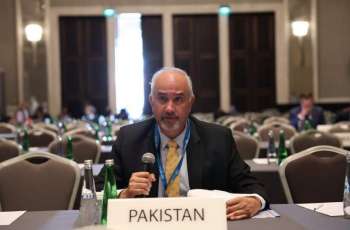WASHINGTON (Pakistan Point News / Sputnik - 13th December, 2019) Major relic of the Russian Diaspora - the Kursk Root Icon of the Mother of God - may visit Russian cities of Kursk and Belgorod, and Serbia sometime in the fall of 2020, the Chancellor of the Synod of Bishops of the Russian Orthodox Church Outside of Russia (ROCOR) Chancellor protopriest Serafim Gan told Sputnik Thursday.
"The Synod of Bishops received three petitions regarding possible future visits of the Kursk icon to Russia. The Metropolitans of Kursk and Belgorod wrote to the Synod, and there was a petition from Bishop Anthony of the Serbian Orthodox Church, the representative of Patriarch Irenej in Moscow," father Serafim said. "Our Synod's response to these petitions was to satisfy them if the His Holiness Patriarch [of Moscow and All Russia] Kyrill blesses."
The icon may visit Russia and Serbia "probably in the autumn of 2020," the protopriest added.
The Kursk Root icon dates back to the 13th century. According to Russian Orthodox Church, a hunter from the city of Rylsk near Kursk came across the icon at a root of a tree in 1295. Legend has it that the hunter picked up the icon and a spring of pure water gushed from the place it lay upon. The hunter built a chapel near the site.
After the signing the Act of Canonical Communion In 2007, ROCOR and the Moscow Patriarchate agreed that the icon would be sent every September to Russia, including in the city of Kursk.
The faithful have attributed numerous miracles to the icon. In the 14th century, when Tartars - who are said to be descendants of Bulgars - came to raid the Kursk Region and cut the icon in two, the two halves grew together, leaving a small trace of the break that is still observable.
Many Russian saints, including St. Seraphim of Sarov and St. John of Shanghai and San Francisco have prayed in front of the icon.
In 1920, the Kursk Root Icon of the Mother of God left Russia as many faithful fled the country following the 1917 Bolshevik Revolution that saw the start of a large-scale persecution of Christians. The icon was moved from place to place, including Serbia and Germany, and was finally taken to the United States.



